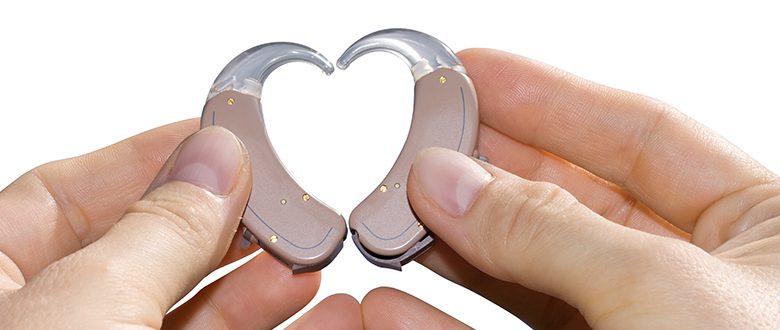
Hearing aids: the end to a muted world
There are over 10 million people who are deaf or hearing impaired in the UK. Over 2 million use hearing aids to help retain high quality of life, though it is estimated that a further 4 million would benefit from such devices if only they were encouraged to investigate these sophisticated devices and how they can help manage hearing loss.
There are various causes of hearing loss, and different degrees of hearing loss. Of the 10 million UK residents who are deaf and hard of hearing, the biggest age group is the over 70 year-olds; where the most likely cause of hearing loss is linked to the natural process of aging. Age related hearing loss can start as early as the mid 40s and gradually deteriorate over many years before the signs of hearing loss are experienced, or recognised by others. Understanding what goes wrong is often the first step in accepting that hearing loss is present and going on to try the various technological aids available to manage the impact of hearing loss.
Our inner ear contains thousands of tiny structures known as hair cells. These hair cells are crucial to the transmission of sound information to the brain, where it is processed. As the body ages the functioning of the hair cells can gradually deteriorate, until eventually there is difficulty in hearing or understanding certain sounds. The body does not regenerate new hair cells, so any resultant hearing loss is permanent, and cannot currently be cured medically. In age related hearing loss, hair cells processing the higher frequencies or pitches of sound are usually affected the most, which means the hearing loss is worse for treble sounds than bass sounds. Age related hearing loss is referred to as a sensori-neural type of hearing loss, where the cause of the problem lies in the inner ear and nerve-functioning. Those who have sensori-neural hearing loss can look to retailers as well as the NHS to supply various amplification aids designed for day-to-day hearing activities.
Digital hearing aids are by far the most recommended solution. These small electronic devices work by picking up external sounds using a sensitive microphone/s. The sound is processed and amplified and delivered directly into the ear canal. There are available for private purchase; as well as free from the National Health Service, though the choice of models is limited and waiting lists may apply.
Types or styles of hearing aids vary in how they fit around or within the wearer’s ear.
BTE – The most popular group are the ‘behind the ear’ hearing aids. The casing of the aid, where the electronic components are housed fits behind the wearer’s ear. From the casing, tubing leads down over the top of the ear into the ear. The tubing can end in an earmould or dome. To the man in the street they are considered the least discreet option, but modern fittings using thin tubings or receiver-in-the-canal designs can be remarkably well hidden. This style of product tends to offer the most potential for power or amplification.
ITE – Another popular group is the ‘in the ear’ hearing aids. As the name suggests, the whole device is designed to fit inside the ear (as opposed to behind the ear). ITEs tend to be larger than ITCs or CICs (see below), but the larger design allows for bigger hearing aid batteries to be used in the design, giving better battery life and more powerful amplification options.
ITC and CIC – These two are the smallest hearing aids found, which are useful for those looking for the most discreet solutions. Potential limitations to ‘in-the-canal’ or ‘completely in the canal’ designs are a limited amount of available amplification and shorter battery lives.
Ultimately, the decision of wearing one type over the other will depend on the a number of factors, including required amplification levels, sound feature preferences, and where the hearing aids are being issued (NHS do not generally offer any in-the-ear/canal products).
If you are concerned about your own hearing, or you care for someone who might be showing signs of hearing loss talk to your healthcare provider. A simple hearing test conducted at a hearing centre or local NHS audiology department (following a referral) will reveal whether your hearing is impaired and whether you could benefit from hearing aids.
Information written by Joan McKechnie BSc Hons Audiology & Speech Pathology.
Joan consults for UK based www.hearingdirect.com *Statistics by Action on Hearing Loss accurate to 2011.
Check out…
• Models of Diversity: could you be the next hot disabled model?
• Access to shopping on the high street
• Dating confessions of a 20-something disabled guy
Get in touch by messaging us on Facebook, tweeting us @DHorizons, emailing us at editor@disabilityhorizons.com or leaving your comments below.